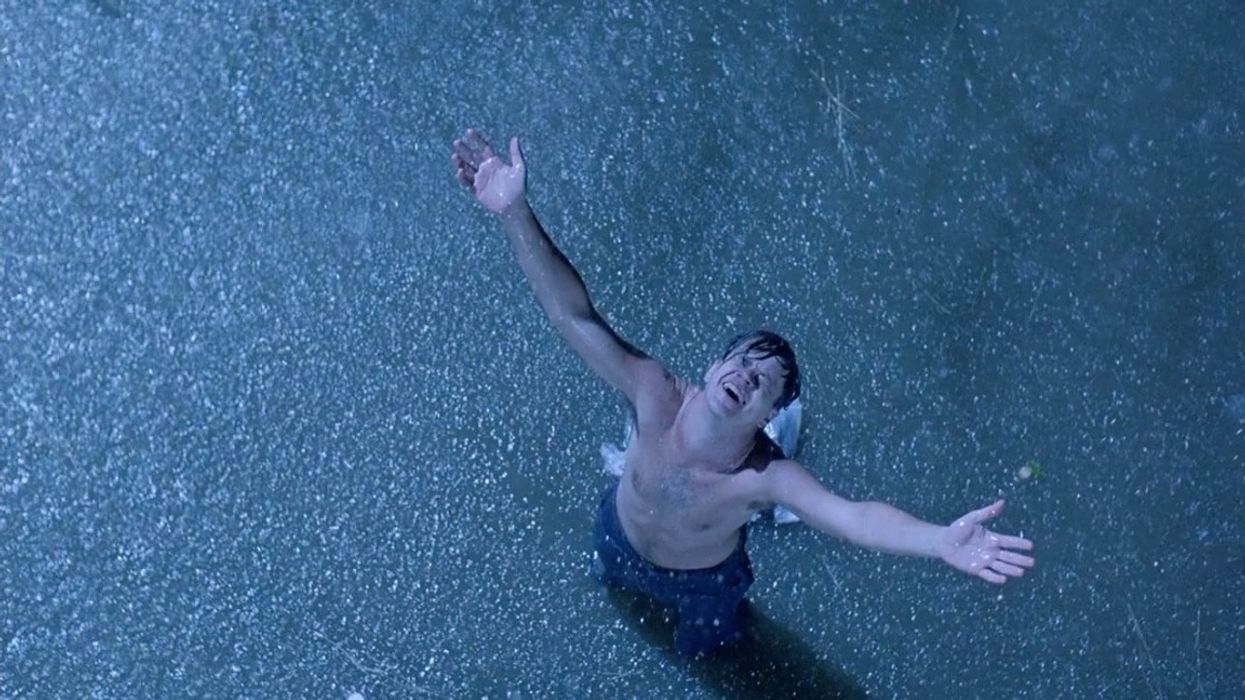2 Ways 'Shawshank Redemption' Can Make You a Better Director
25 years after its release, The Shawshank Redemption is just as powerful and career-changing now as it was then.

Shawshank Redemption is the best Stephen King adaptation ever.
Frank Darabont's perfect screenplay captures the tricky tone of King's novella effortlessly, while enhancing the source material with its dramatic license -- all in the service of theme and character. Of telling an intimate, emotional epic at human height -- so that every victory wrongfully-imprisoned Andy Dufresne (Tim Robbins) earns or traumatic setback he suffers feels like one of our own.
But executing that vision, those intents, obviously wasn't easy. In fact, in a recent interview with Empire, Darabont shared that "every day of filming felt like a failure." He felt what all directors do: They didn't have enough time or money. It's inspiring that even someone at his level feels imposter syndrome, and on his film's 25th anniversary, Darabont shares two behind-the-scenes moments that changed his process. They can also change yours.
1. Pulling Off the Film's Opening
Shawshank opens with the murder of Andy's wife intercut with Andy being tried and convicted for the crime. But that wasn't always the intent. In fact, it was shooting the opening scene that lead the filmmaker to feel most like a failure.
"If you read the script," Darabont told Empire, "[it] was very much two blocks of consecutive narration. And my very first night of shooting on the movie was the night of the murder [of Andy's wife and lover]. And I realized, 'I need two more nights here. I've only got one."
Darabont did the best with what time he had, getting the most important shots he could think of -- but the feeling of failing persisted.
"Richard Francis-Bruce, the brilliant editor, and I were banging our heads against the Steenbeck for months, trying to figure out how to cut it together. Then one morning, I thought: 'Why don't we just do it as a courtroom scene and use the shots I got as little flashback moments?' It worked like a treat."
Thoughts aren't reality. Feeling you are a failure can often lead to finding ways to succeed. Just because you planned or imagined one way in the beginning, and struggled to make it work, doesn't mean you're a failure for trying to find a better, more effective way to deliver your intents. It just means you're like any other filmmaker, doing the best with what you have until something better occurs to you. And, even then, you may change your mind. And that's okay.
What's also okay is allowing yourself room to fail. To divorce yourself from rigid thinking and making mental notes in ink, when filmmaking is just ideas written in pencil.
This elasticity can extend to a director's process with actors, as well. Something Darabont learned a lot about working with Robbins and his co-star, Morgan Freeman.
2. Sometimes, Directing Is Telling Your Actors "Where to Sit"
When asked if the above scenario changed his directing approach as he went along, Darabont recalled an anecdote with his principal actors that occurred on set but is applicable to anyone's production.
"The one thing I did learn is how different every actor is. Tim was a textbook example of that. He's a very intellectual guy. He needs to talk about the scene to come. He needs conceptual conversation ... Morgan is the other way around."
Darabont discovered how to best approach Freeman halfway through the shoot. "I was talking about a scene to come," Darabont said, "and Morgan was being very polite and listening. But I could see his eyes glazing a little. And I stopped and said, 'Morgan, let me ask you something. You don't really need all this conversation, do you?' And he goes, 'No, not really. I just need you to tell me when to stand, when to sit. And do I turn left, or do I turn right?' And I went, 'Good lesson to learn.'"
Some lessons can only be taught in the field. On set. Halfway through a shoot. And, again, that doesn't mean you've failed. Or that they are there to put you in crisis. They are to show you how strong and successful you really are, and can be. Which are all the more appropriate things to realize when talking about a movie literally fueled by hope.
A movie that has stayed with us long after the credits have rolled.











